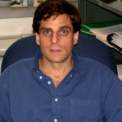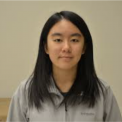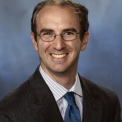Events Calendar View
-
CSP Lunch Seminar
Jan 21, 2020
Quantum supremacy and the future of near-term quantum computing
-
Departmental Colloquium
Jan 23, 2020
Spintronics with 2D Materials: New Functionalities with Heterostructures
In this talk, I’ll first briefly review graphene spintronics and the ‘hallmark’ Hanle spin precession measurement in non-local spin valves. Then I’ll discuss our recent works in hybrid 2D optospintronic systems, such as the first demonstration of opto-valleytronic spin injection across a monolayer transition-metal dichalcogenide (TMD)/graphene interface. We confirmed the full process of optical spin injection, lateral spin transport and electrical spin detection up to room temperature using Hanle spin precession and showed such process can be controlled by photon helicity and photon energy. Next, I will discuss our current work investigating the origin of such charge and spin transfer processes across TMD/graphene interfaces. We observed an intriguing photoconductance bias and gate dependence in a dual-gated MoS2/ graphene field-effect device, indicating the dominance of a vdW photothermoelectric effect. In addition, we study the ultrafast photon-spin transfer process across a monolayer WSe2/ graphene interface using time resolved Kerr rotation and photocurrent microscopy. We discovered a highly efficient spin and charge transfer dynamics from WSe2 to graphene that last less than 10 ps. At last, if time permits, I’ll briefly discuss our recent transport work that unveils a strong and highly tunable spin-lifetime anisotropy in dual-gated bilayer graphene.
-
CSP Lunch Seminar
Jan 28, 2020
Towards Scalable and Reliable Architectures for Quantum Computing Platforms
-
Departmental Colloquium
Jan 30, 2020
Engineering Oxide Thin Films at the Atomic Level for New Electronic and Energy Applications
Complex oxides comprised of multiple positively charged metal cations exhibit a host of intriguing and useful properties for new technologies. Perovskite oxides with the chemical formula ABO3 and spinel oxides with the formula AB2O4 have some of the richest behavior. These materials may be metallic, semiconducting, or insulating, and exhibit ferroelectricity, with a built-in electric polarization, ferromagnetism, or superconductivity. This combination of properties in a single class of materials offers rich opportunities for engineering of unusual combinations of behavior through the design of multi-layer thin film materials. Through the use of molecular beam epitaxy (MBE), we are able to engineer these materials down to the atomic level so that interfaces between two different materials can be controlled to produce desirable properties. In this talk I will present two examples of this type of interfacial engineering, showing how we can design, model, and characterize these properties through a wide variety of techniques. I will first discuss our work on spinel and perovskite oxide nanocomposites that can be used in the oxygen reduction and oxygen evolution reactions. Using a combination of x-ray photoelectron spectroscopy (XPS), x-ray absorption spectroscopy (XAS), scanning transmission electron microscopy (STEM), and spectroscopic ellipsometry we have answered fundamental questions about the properties of CoMn2O4 and MnFe2O4. Ongoing work focuses on integrating these materials with perovskites such as LaNiO3 and LaFeO3 to produce bifunctional catalysts. Our second project focuses on the synthesis of defect-free SrTiO3 and Sr(Ti,Nb)O3 thin films using hybrid MBE. Using XPS surface studies, we have answered fundamental questions regarding this emerging growth technique. Ongoing work focuses on the use of these materials to produce novel oxide heterostructures for topological phases, and spintronic devices.
-
Departmental Colloquium
Feb 6, 2020
Laboratory Astrophysics Studies along the Cosmic Cycle of Gas (Part I)
Tracing the evolution of baryonic matter from atoms in space to stars and planets hinges on an accurate understanding of the underlying physics controlling the properties of the gas at every step along this pathway. Here I will explain some of the key epochs in this cosmic cycle and highlight our laboratory studies into the underlying atomic, molecular, plasma, and surface physics which control the observed properties of the cosmos.
-
CSP Lunch Seminar
Feb 11, 2020
Exact microcanonical statistical analysis of transition behavior in Ising chains and strips
Page 101 of 121, showing 6 records out of 723 total, starting on record 601, ending on 606





